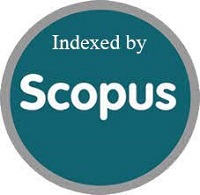Uji Validitas Konstruk Alat Ukur Persepsi Hubungan Orangtua-Anak Terhadap Perilaku Seksual Pada Mahasiswa
DOI:
https://doi.org/10.15408/jp3i.v6i1.8152Keywords:
validitas konstruk, hubungan orangtua-anak, skala hubungan orangtua-anak, CFA.Abstract
This research aims to measure the construct validity of the parent-child relationship scale developed by theory Miller, Benson and Galbraith (2001). The scale made by researcher consists of 24 items with three dimensions of parent-child relationship, that is support, open communication, and control of the parents will affect the child in conducting sexual behavior. This research just see the parent-child relationship from the side of the child (college student) so the researcher adds perception theory to clarify the purpose of the research, that is to see the college student perception about the relationship with the parents and the effect on sexual behavior. The sample this research is 200 respondents of male and female college student. The research data is analyzed using confirmatory factor analysis (CFA) technique with lisrel 16.0 program.
Tujuan dari penelitian ini yaitu untuk menguji validitas konstruk skala hubungan orangtua-anak yang dikembangkan berdasarkan teori Miller, Benson dan Galbraith (2001). Alat ukur yang dibuat oleh peneliti ini terdiri dari 24 item dengan tiga dimensi hubungan orangtua-anak berupa dukungan, komunikasi terbuka, dan kontrol dari orang tua akan mempengaruhi anak dalam melakukan perilaku seksual. Pada penelitian kali ini, peneliti hanya melihat hubungan orangtua-anak dari sisi anak (mahasiswa) sehingga peneliti menambahkan teori persepsi untuk memperjelas tujuan dari penelitian yaitu melihat persepsi mahasiswa mengenai hubungan dirinya dengan orangtua serta pengaruhnya terhadap perilaku seksual. Sampel yang digunakan berjumlah 200 responden yang terdiri dari mahasiswa laki-laki dan perempuan. Dianalisis menggunakan metode Confirmatory Factor Analysis (CFA) dengan bantuan program Lisrel 16.0.
References
Crockett, L J., Raffaelli, M., and Moilanen, K L. (2003). Adolescent sexuality: behavior and meaning. Faculty Publications, Department of Psychology, 245.
Henrich, C., Brookmeyer, K., Shrier, L., & Shahar, G. (2006). Supportive relationships and sexual risk behavior in adolescence: an ecological-transactional approach. Journal of Pediatric Psychology, 31(3), 286-297.
Markham, C., Lormand, D., Gloppen, K., Peskin, M., Flores, B., Low, B., & House, L. (2010). Connectedness as a predictor of sexual and reproductive health outcomes for youth. Journal of Adolescent Health, 46, S23–S41.
Miller, B C., Benson, B., Galbraith, K A. (2001). Family relationships and adolescent pregnancy risk: a research synthesis. Journal of Developmental Review, 21, 1–38
Parkes, A., Henderson, M., Wight. D., & Nixon, C. (2011). Is parenting associated with teenagers’ early sexual risk-taking, autonomy and relationship with sexual partner?. Journal of perspectives on sexual and reproduction health, 43(1), 30- 40.
Scony, M.E., Deptula, Dp., & Henry, D.B. (2010). How can parents make a deferrence? Longitudinal association with adolescent sexual behavior. Journal of family psychology, 24(6), 731-739.
Sidze, E., & Defo, B. (2013). Effects of parenting practices on sexual risk- taking among young people in Cameroon. BioMed Central.
Steinberg, L., Silk, J S. (2002). Handbook of parenting: parenting adolescents. New Jersey: Lawrence Erlbaum Associates, Inc.
Umar, J. (2012). Jurnal Pengukuran Psikologi dan Pendidikan Indonesia, 2(2), 115-116



